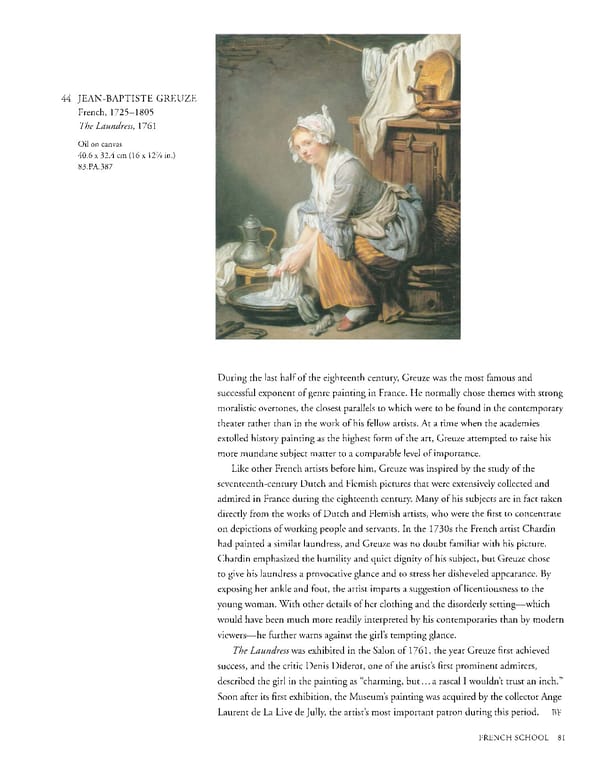44 JEANBAPTISTE GREUZE French, 17251805 The Laundress, 1761 Oil on canvas 40.6 x 32.4 cm (16 x 12 7/8 in.) 83.PA.387 During the last half of the eighteenth century, Greuze was the most famous and successful exponent of genre painting in France. He normally chose themes with strong moralistic overtones, the closest parallels to which were to be found in the contemporary theater rather than in the work of his fellow artists. At a time when the academies extolled history painting as the highest form of the art, Greuze attempted to raise his more mundane subject matter to a comparable level of importance. Like other French artists before him, Greuze was inspired by the study of the seventeenthcentury Dutch and Flemish pictures that were extensively collected and admired in France during the eighteenth century. Many of his subjects are in fact taken directly from the works of Dutch and Flemish artists, who were the first to concentrate on depictions of working people and servants. In the 1730s the French artist Chardin had painted a similar laundress, and Greuze was no doubt familiar with his picture. Chardin emphasized the humility and quiet dignity of his subject, but Greuze chose to give his laundress a provocative glance and to stress her disheveled appearance. By exposing her ankle and foot, the artist imparts a suggestion of licentiousness to the young woman. With other details of her clothing and the disorderly setting—which would have been much more readily interpreted by his contemporaries than by modern viewers—he further warns against the girl's tempting glance. The Laundress was exhibited in the Salon of 1761, the year Greuze first achieved success, and the critic Denis Diderot, one of the artist's first prominent admirers, described the girl in the painting as "charming, but... a rascal I wouldn't trust an inch." Soon after its first exhibition, the Museum's painting was acquired by the collector Ange Laurent de La Live de Jully, the artist's most important patron during this period. BF FRENCH SCHOOL 81
 Masterpieces of the Getty Museum: Paintings Page 81 Page 83
Masterpieces of the Getty Museum: Paintings Page 81 Page 83